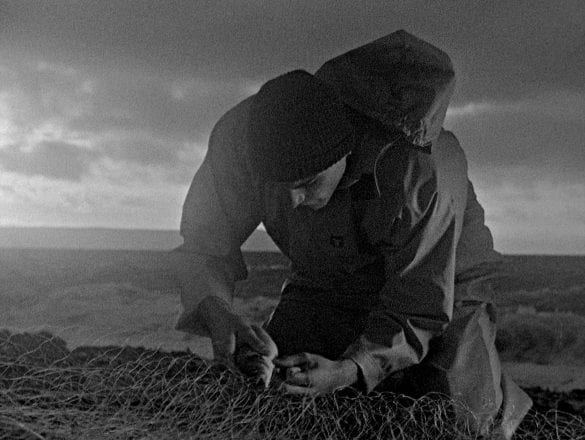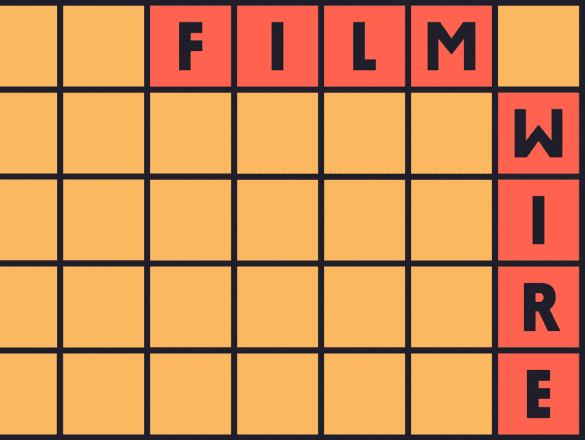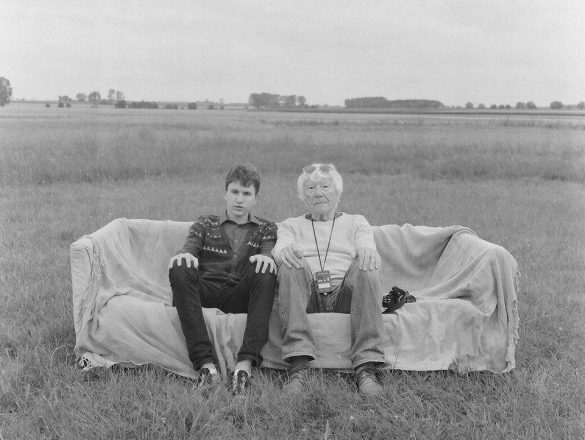Mark Jenkin’s startling new film Bait tells the story of a Cornwall fisherman whose life has been disrupted and bought up by tourists. Filmed in black and white with a 16mm Bolex camera, a hyperreal sound design gives a surreal, nostalgic sheen to a very modern story. We talked to Mark about the pleasures of small crews, tight budgets and working with film.
At the heart of Bait is a story of modernisation versus tradition. Did you ever face any concerns or opposition from the Cornish community whilst filming there?
Mark Jenkin: No, but then we’re such a tiny little group, we don’t really look like a film crew. I don’t record any location sound, and the one thing that gives away a film crew is the sound department. We were very careful - because of the subject matter of the film itself – that we weren’t going in and taking over places. Maybe some people had concerns about how Cornwall was going to be depicted, but we were pretty anonymous, so nobody knew about Bait until the film was finished.
So how have the reactions been from Cornish audiences since you started screening Bait?
MJ: It’s difficult to tell the consensus opinion, because when you do Q&A screenings, it’s normally the people who like the film who talk to you afterwards, rather than those who don’t. I was really nervous about the Cornish reaction, about whether I had portrayed people authentically. That was my big concern.
Whether people like or don’t like the film, that’s up to them and their personal taste, but in terms of the authenticity, that’s a little bit more cut and dried. But it all seems to have gone well, and sales in Cornwall are great. Word of mouth is spreading across the country too.
The way Bait presents itself to an audience – a weathered image in black and white, unnerving sound design – will inevitably put some audience members off seeing it. Does audience expectation ever factor in when you start making a film?
MJ: I never think about the audience, because until they’re sat in a room waiting to watch your film, they’re only hypothetical. If you’re making something for a hypothetical audience, you end up making lowest common denominator shit.
For me, it’s really important to follow my gut and I know I’m not so different to everybody else that if it satisfies me, there will be an audience for it. There’s a danger of second guessing what people want. You can say that something is popular right now, but it takes a couple of years to make a film, by which time fashions and tastes will have changed. You’re on a hiding to nothing. I know a lot of the industry is based around those hypothetical audiences, but that’s when you produce films that are just okay, but will never really wow people.
You do hear that some distributors or sales agents will walk away as soon as they find out a film is in black and white because they think it won’t sell, and I’m sure that’s all based on some mathematical algorithm about what audiences respond to, but it displays a terrible lack of bravery and a lack of interest in giving an audience something they maybe didn’t realise they wanted until they’d seen it.
You’ve said in the past that you lost your passion for making films a few years back. What happened?
MJ: Well, I’d been making a film with a digital camera and whilst I enjoyed the process, I had the feeling that something was missing. I didn’t enjoy working with the digital camera – the possibilities were limitless, but that actually left me very cold. Plus on a very surface level, I didn’t like the aesthetic of the image either.
So I spent a lot of time trying to get some texture into this clean, pin sharp image I’d been left with. And then soon after that I had an operation and was laid out on the sofa watching Mark Cousins’ The Story of Film on DVD, and I listened to how passionate he was about film and I thought, ‘Gosh, that’s what I used to be like’. But it kind of ebbed away.
I watched the whole series a couple more times, then I thought I’d just go back to the beginning when I was 17 and making films with a Super 8 camera. So I bought a Super 8 camera online, got some film, worked out how to process it at home - actually doing it in a bucket - and when I looked at the final negative playing on a projector, that enthusiasm all came flooding back.
You’re one of a select group of British filmmakers still shooting with actual film, rather than using digital cameras. Why do you think that is? Ease of convenience? Budgets?
MJ: People have all these preconceptions about working with film, but they’re quickly dispelled. You don’t need a huge amount of money to do it. That’s just a myth that’s been propagated over the years.
And I’ve lost count of the amount of reviews that have described Bait as being shot on ‘old film stock’. It was shot on brand new film stock! It’s old technology, but not old film stock. And the camera we used – a 16mm Bolex camera - is one of the more modern ones, made in 1976. It’s a very simple machine. Try getting a spare part for a digital camera from 10 years ago and you’ll struggle. But you can get parts for Bolexes, or you could even make them yourself. They’re simple, mechanical objects.
Considering your commitment to film, have you had a 35mm print made of Bait?
MJ: Yes, it’s screened a couple of times at the NFT and the Watershed in Bristol. Kodak were quite excited that there was somebody shooting with film on a very low budget. There’s a lot of press when big movies are shot on 35mm or 70mm, but for Kodak, the fact that somebody with no money is managing to shoot on film got them very excited. I think the danger is that shooting on film becomes perceived as a really elitist thing, and that’s a shame, because I’m at the other end of the scale with that in terms of budgets and the size of our crew.
You’ve said that working to a tight budget is a benefit to how you work. If somebody gave you three million pounds tomorrow to make a film, would you know what to do with it?
MJ: Well, I’d probably keep two and a half million, then use half a million to make the film. Or I’d make the film exactly the same way as I normally do and everybody gets paid huge amounts of money! But it’s not the money itself that’s the problem, but rather what comes with the money. They don’t give you three million quid and say, ‘Right, see you at the premiere!’. They want to stick their fingers in.
I have a really childlike approach to making films, where I want to do everything - the sound, the camera, processing the film, cutting it, doing the score. The smaller we can keep the films, the more control I can have, as well as control over who I’m working with. Of course, it’d be nice to not have to worry about paying the next bill, but I’d prefer to get another job to subsidise my filmmaking rather than give up control over what I’m doing.
The famous saying about art is that it’s never really finished, just abandoned. Now that Bait is being screened in cinemas, would you subscribe to that theory?
MJ: Yes, I do think it’s more abandoned than finished, but that quickly becomes irrelevant. Initially, especially when you’re working on such a low budget like I do, you don’t have anybody telling you to finish it. You could carry on forever, but once it’s in front of an audience, it becomes a finished object. I’m very relaxed with Bait when I watch it. I never think, ‘Oh, I wish I’d done that, or this or that doesn’t work…’ I’m only concerned that it’s in focus and racked properly and is loud enough.
So yes, I do believe that it’s ultimately abandoned, but that’s before it goes in front of an audience, because by then – well, it sounds like a salty cliché, but then it really does belong to the audience.
Bait is released on 30 August 2019, and will be showing at the following Midlands venues:
6 to 12 Sep at Old Market Hall, Shrewsbury
6 to 12 Sep at Broadway, Nottingham
13 to 19 Sep at Phoenix, Leicester
20 & 24 Sep at Northampton Filmhouse
4 to 22 Oct at MAC, Birmingham
15 Oct at Stoke Film Theatre




